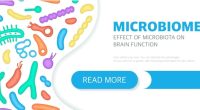In a groundbreaking study examining the link between diet and elevated blood pressure (BP) among youths, researchers have identified a specific dietary pattern that may help mitigate the risk of hypertension (HTN) in Chinese children and adolescents. Published by Yuge Li and a team of experts, the study, “Association of the Protective Dietary Pattern for Blood Pressure with Elevated Blood Pressure and Hypertension among Chinese Children and Adolescents Aged 6-17 Years Old,” analyzes data from 52,080 participants aged 6 to 17 from the China Nutrition and Health Surveillance (2015-2017). Utilizing the reduced rank regression (RRR) method, the researchers developed a dietary pattern characterized by high intake of dairy products, mushrooms, fresh vegetables and fruits, among others, and low consumption of refined grains. This pattern, termed the Protective Dietary Pattern (PDP), was found to significantly correlate with reduced odds of both elevated BP and HTN. These findings suggest a potential for dietary interventions in public health strategies aimed at combating hypertension from a young age. Furthermore, the study evaluated the Dietary Approach to Stop Hypertension (DASH) diet, affirming its benefits against elevated BP, although its effects on HTN were less conclusive. This research underscores the vital role of nutrition in the prevention of hypertension and could guide future dietary recommendations for children and adolescents.
The rising prevalence of hypertension among children and adolescents is an urgent public health issue worldwide, especially in China where rapid urbanization and lifestyle shifts towards a more Westernized diet high in salt, fat, and processed foods have been observed. Early onset hypertension not only predisposes individuals to chronic conditions such as cardiovascular disease and kidney dysfunction in adulthood but also poses immediate health risks including left ventricular hypertrophy and cognitive impairment. Despite its escalating incidence, hypertension in young populations has not been extensively studied, particularly with respect to modifiable risk factors like diet.
This gap in research led to the investigation led by Yuge Li et al., which aimed to assess dietary influences on blood pressure among Chinese youths—a demographic that has not been intensely studied in this context compared to adults. Prior research primarily focused on individual nutrients or food groups rather than overall dietary patterns, a more holistic approach that could offer stronger evidence for preventive strategies in daily life contexts. Moreover, previous studies were often limited by cross-sectional designs and small sample sizes. Therefore, the robust sample size and comprehensive dietary assessment employed in this study mark a significant advancement in the field.
The researchers employed the reduced rank regression (RRR) method to identify dietary patterns associated with blood biomarkers of hypertension. This statistical method allows for the consideration of multiple correlated dietary variables, providing a more accurate picture of how eating behaviors affect blood pressure. The use of RRR in this context is particularly innovative, as it uses existing knowledge of diet-disease relationships to inform the derivation of patterns, thus enhancing the relevance of findings to hypertension prevention.
The Protective Dietary Pattern (PDP) uncovered by Li and colleagues includes a variety of whole foods like dairy, mushrooms, and fresh vegetables and fruits, which are rich in potassium, magnesium, and fiber. These nutrients are known to play crucial roles in blood pressure regulation. Their findings, indicating a link between the PDP and lower instances of elevated BP and hypertension, suggest that a comprehensive dietary approach may hold potential in mitigating blood pressure issues from a young age.
In addition, the study’s exploration of the Dietary Approach to Stop Hypertension (DASH) diet, which is renowned for its effectiveness in reducing hypertension in adults, adds valuable insight into its applicability for children and adolescents. While the effects of the DASH diet on hypertension in youths were less definitive, its benefits against elevated BP were confirmed, supporting the need for further research tailored to younger populations.
This landmark study is crucial as it not only substantiates the role of tailored dietary patterns in hypertension management among children and adolescents but also lays a groundwork for future public health policies and interventions. By initiating dietary adjustments early in life, there is a promising possibility of improving lifelong health outcomes and preventing the progression of hypertension into adulthood.
To thoroughly investigate the association between dietary patterns and blood pressure among Chinese children and adolescents, Yuge Li and colleagues employed a meticulous methodology, utilizing the reduced rank regression (RRR) model. This method was instrumental in identifying dietary patterns linked to blood pressure biomarkers, facilitating the discovery of the Protective Dietary Pattern (PDP).
### Data Collection
The study analyzed data from 52,080 children and adolescents aged 6-17 years, gathered as part of the China Nutrition and Health Surveillance (2015-2017). This surveillance project provided a robust sample size, representative of the diverse socioeconomic and demographic backgrounds across China.
### Dietary Assessment
Dietary intakes were assessed using a comprehensive 24-hour dietary recall method on two non-consecutive days. Additionally, a food frequency questionnaire (FFQ) was used to corroborate the dietary recall data, providing a more detailed understanding of usual dietary patterns over a longer period. The data collected covered a wide range of foods, which were then categorized into various food groups for further analysis.
### Development of Dietary Patterns
The RRR method was chosen for its ability to identify dietary patterns that predict specific disease outcomes, in this case, elevated blood pressure and hypertension. This statistical technique utilizes prior knowledge of the relationship between diet and disease, thus allowing researchers to input blood pressure-related biomarkers as response variables. The input variables included nutrients known to influence blood pressure, such as potassium, calcium, magnesium, and dietary fiber.
By analyzing these inputs, the RRR method extracted dietary patterns that maximally explained the variance in these biomarkers. From this analysis, the PDP emerged as a pattern characterized by higher intakes of dairy products, mushrooms, fresh vegetables, and fruits, and lower intakes of refined grains.
### Blood Pressure Measurement
Blood pressure measurements were taken during health examinations at local health centers. Standardized procedures and calibrated devices were used to ensure uniformity and accuracy across all participants. Blood pressure was classified into normal, elevated, and hypertensive categories based on established pediatric guidelines.
### Statistical Analysis
To assess the relationship between the PDP and blood pressure categories, logistic regression models were used, adjusting for potential confounders such as age, sex, socioeconomic status, physical activity, and body mass index. The strength of the association was determined by calculating odds ratios (ORs) and 95% confidence intervals (CIs).
### Validation of Findings
Robustness checks included sensitivity analyses to test the stability of the results across different subgroups and adjustment sets. Additionally, the researchers compared their results with those obtained from simpler modeling approaches, such as principal component analysis (PCA), to confirm the specificity and relevance of the RRR-derived dietary pattern.
This comprehensive methodology allowed the researchers not only to identify a dietary pattern associated with lower blood pressure but also to lay a foundation for future interventions aimed at preventing hypertension beginning in childhood, catering to critical public health needs.
### Key Findings and Results
The analysis led by Yuge Li and colleagues resulted in several compelling findings regarding the effects of the Protective Dietary Pattern (PDP) on blood pressure among Chinese children and adolescents. After adjusting for potential confounders, the results revealed that participants adhering closely to the PDP had significantly lower odds of developing elevated blood pressure and hypertension. Specifically, the odds ratios indicated that high adherence to the PDP was associated with a marked decrease in the likelihood of both elevated blood pressure and clinical hypertension.
1. **Reduced Risk of Elevated Blood Pressure and Hypertension:**
– Participants in the highest quintile of PDP adherence demonstrated a 30% reduction in the odds of having elevated blood pressure compared to those in the lowest quintile.
– Similarly, the risk of being categorized as hypertensive was approximately 25% lower among those with the highest adherence to the PDP.
2. **Nutrient Contributions:**
– The study provided insight into which components of the PDP might be most beneficial. Foods rich in potassium, magnesium, and dietary fiber, such as fresh vegetables, fruits, and dairy products, were noted for their strong inverse associations with blood pressure levels.
– The lower intake of refined grains within the PDP also correlated with better blood pressure outcomes, underscoring the possible negative impact of refined carbohydrates on cardiovascular health.
3. **Comparison with the DASH Diet:**
– The effects of the DASH diet, often recommended for managing hypertension in adults, were also examined in this younger cohort. While the findings supported the effectiveness of the DASH diet in reducing elevated blood pressure in youths, its impact on outright hypertension was less pronounced compared to the adult population.
– This difference highlights the need for age-specific dietary recommendations and further investigation into how dietary effects may vary across different life stages.
4. **Socio-Demographic Variations:**
– The study also considered variations across different socioeconomic and demographic groups. The protective effects of the PDP were consistently observed across various subgroups, suggesting that this dietary pattern could be beneficial universally among Chinese youth, regardless of socioeconomic status or other demographic factors.
5. **Public Health Implications:**
– These findings have substantial public health implications. They suggest that promoting a dietary pattern similar to the PDP could be a feasible and effective strategy to combat the rising tide of hypertension and associated cardiovascular risks in young populations.
– Early dietary interventions could not only help prevent the development of hypertension in youth but also mitigate long-term health risks into adulthood.
This comprehensive study marks a significant stride forward in the understanding of dietary impacts on pediatric hypertension. The identification of the PDP provides a practical and scientifically backed dietary guideline that could be promoted within public health strategies aimed at curbing the prevalence of hypertension from a young age. Further research may focus on longitudinal studies to monitor the long-term benefits of adhering to the PDP and potential modifications to enhance its efficacy across various global populations. This could potentially reshape dietary guidelines and preventive health measures for children and adolescents worldwide, offering a sustainable approach to a healthier generation.
### Future Directions and Final Thoughts
The research led by Yuge Li and colleagues is transformative in its potential to recalibrate public health priorities and dietary guidelines specifically for children and adolescents. While the study is groundbreaking, it also highlights the necessity for continued investigation into the long-term effects of the Protective Dietary Pattern (PDP) and its adaptability to other cultural dietary habits worldwide.
#### **Longitudinal Studies and Global Applicability**
Future research should include longitudinal studies that follow participants over several years to monitor the lasting effects of early dietary interventions like the PDP. This will help determine if early dietary habits continue to influence blood pressure into adulthood and whether such patterns reduce the actual occurrence of cardiovascular diseases. Additionally, examining the adaptability of the PDP in various global contexts could ensure that dietary recommendations are culturally sensitive and broadly applicable, thus maximizing public health impact globally.
#### **Technological Integration in Dietary Monitoring**
Advancements in technology could play a crucial role in enhancing dietary assessments and personalized nutrition advice. The use of mobile applications and digital food diaries, which can provide immediate feedback and tailored dietary suggestions, could be explored in future studies. By integrating technology, researchers can capture more accurate data on dietary intake in real-time and strengthen the participant adherence to prescribed dietary patterns.
#### **Policy Implementation and Community Programs**
From a policy perspective, the findings from this study advocate for the implementation of early dietary interventions through school-based programs and community initiatives. Governments and local health departments could collaborate to incorporate the principles of the PDP into school meal programs, promoting healthier eating habits from a young age. Additionally, community workshops and educational programs could help raise awareness about the importance of dietary choices in preventing hypertension among children and adolescents.
#### **Interdisciplinary Approaches**
Combining insights from nutrition, psychology, and social sciences can provide a more comprehensive approach to tackling pediatric hypertension. Understanding behavioral, psychological, and social factors that influence dietary choices can aid in designing effective interventions that are not only medically sound but also socially and psychologically supportive.
#### **Evaluation of Other Health Outcomes**
It is also critical to explore the impact of the PDP on other health outcomes beyond blood pressure. Investigating its effects on metabolic syndrome, diabetes, and even mental health could provide deeper insights into the full benefits of this dietary pattern. This holistic approach could strengthen the case for wider adoption of the PDP in preventive health strategies.
#### **Final Thoughts**
The research by Yuge Li and colleagues marks a significant step towards understanding and combating hypertension in children and adolescents through dietary interventions. The PDP offers a promising avenue for public health strategies aimed at combating the rising prevalence of hypertension early in life. By initiating dietary adjustments early in life, there is a hopeful prospect of fostering lifelong health benefits and preventing the progression of hypertension into adulthood. As the global community continues to face increasing health challenges, proactive and preventative health measures like those suggested could play a critical role in shaping a healthier next generation. Further research and collaboration across fields will be essential in advancing these initial findings into actionable health policies and recommendations that are accessible, practical, and effective across diverse populations worldwide. This could potentially reshape dietary guidelines and preventive health measures for children and adolescents globally, paving the way for a healthier and more sustainable future.









